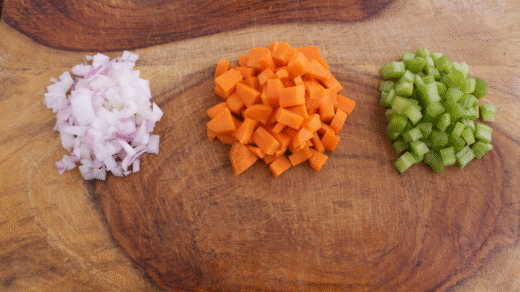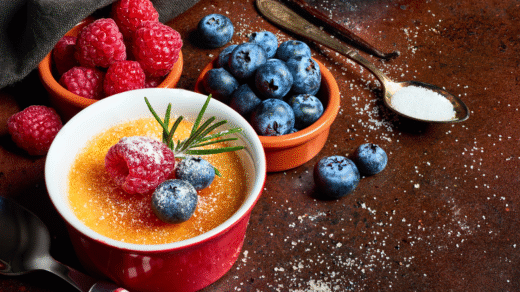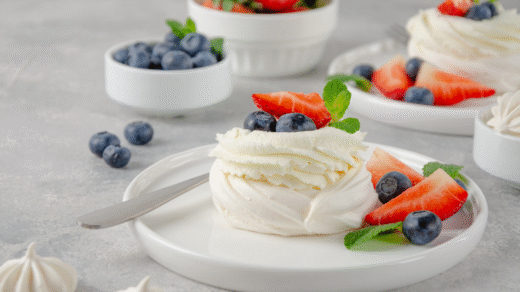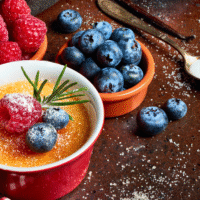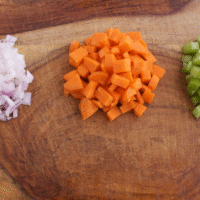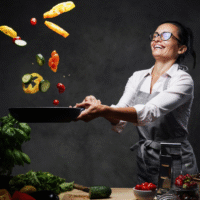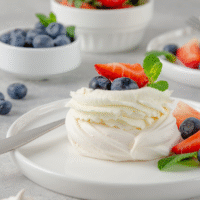Can a simple pan and a dash of oil transform your cooking from bland to brilliant? The answer lies in learning how to sauté—a technique that turns basic ingredients into flavor-packed dishes with crisp textures and rich aromas. Sautéing, rooted in French culinary tradition, relies on high heat, precise timing, and confident movement to unlock the hidden potential of vegetables, proteins, and more.
Derived from the French word for “jump,” this cooking style involves gently tossing food in a hot pan coated with minimal fat. The goal? To caramelize surfaces quickly while preserving natural juices. A properly preheated pan ensures even browning, and using oils with high smoke points, like avocado or grapeseed, prevents burning.
Mastery starts with heat control. Too low, and your food steams instead of sizzles. Too high, and it scorches. The sweet spot? A shimmering layer of oil that dances across the surface. With practice, even home cooks can perfect the wrist flick that keeps ingredients moving without overcrowding the pan.
This guide covers the essentials—how to pick the right tools, time each step, and layer flavors like a pro. Whether crisping garlic for pasta or searing chicken for a weeknight dinner, these techniques will elevate your meals from ordinary to extraordinary.
Key Takeaways
- Sautéing uses high heat and minimal fat to brown food while preserving texture quickly
- Preheating your pan ensures even cooking and prevents sticking
- Constant motion (tossing or stirring) is key to avoiding steamed or burnt results
- Oil selection impacts flavor and heat tolerance—opt for high smoke-point options
- This versatile technique works for proteins, vegetables, and aromatic bases
Sautéing Explained: What It Is and Why It Works
Transform raw ingredients into golden perfection with a technique rooted in French kitchens. This high-heat method creates crispy edges and tender centers through precise thermal control—eliminating the need for boiling or steaming.
From French Kitchens to Modern Stovetops
Born in 18th-century France, the term sauté literally means “jump,” reflecting the flick-of-the-wrist motion chefs use to toss ingredients. Unlike slow roasting or deep-frying, this approach uses just enough oil to coat the pan, creating caramelized surfaces. Historic culinary texts describe it as “the dance of ingredients in hot fat.”
Tools & Ingredients You Need
Mastering this technique requires balancing three factors:
- A heavy-bottomed pan that distributes heat evenly
- Oils with high smoke points (avocado or grapeseed work best)
- Uniformly chopped food pieces for consistent cooking
Overcrowding the pan drops temperatures, leading to soggy results. Professional chefs recommend working in batches when preparing vegetables or proteins. A sizzling sound when ingredients hit the surface signals proper cooking conditions.
Home cooks often achieve restaurant-quality flavor by starting with aromatic bases like garlic or onions. These become foundations for soups, sauces, and recipes—proof that great meals begin with well-executed basics.
Techniques and Tips for Mastering Sautéing
Your skillet becomes a flavor forge when paired with smart techniques. Let’s explore how equipment choices and motion methods turn ordinary ingredients into crispy, caramelized perfection.
Choosing the Right Pan and Fat
Begin with a pan that strikes a balance between weight and agility. Sloped sides make tossing easier, while a thick base prevents hot spots from forming. Cast iron or stainless steel excel here—they retain heat like pros.
- Fat matters: Avocado oil handles high temps, while butter adds richness (use it later to avoid burning)
- New to flipping? A wooden spoon keeps food moving without wrist acrobatics.
Best Oils for Sautéing
| Oil Type | Smoke Point | Flavor Profile | Best For |
|---|---|---|---|
| Avocado Oil | 520°F | Neutral | High-heat cooking, meats |
| Grapeseed Oil | 420°F | Light, clean | Veggies, seafood |
| Ghee (Clarified Butter) | 450°F | Rich, nutty | Chicken, Indian dishes |
| Light Olive Oil | 465°F | Mildly fruity | Aromatics, quick sautés |
💡 Tip: Avoid extra-virgin olive oil for sautéing—it burns faster due to its lower smoke point.
Pan-frying differs—it uses more oil for deeper browning. Stick to a small amount of fat for true sautéing. Deglaze with broth or wine if bits stick, scraping up flavor-packed fond.
Maintaining Consistent Heat and Movement
Preheat your pan until water droplets skitter across its surface. Add oil, then ingredients in a single layer—overcrowding drops the temperature fast. Listen for that initial sizzle!
- Stir gently but constantly for even browning
- If the pan cools, pause additions or boost the burner slightly
Proteins like chicken need space to develop golden sides. For vegetables, work in batches. Remember: a relaxed grip on the panhandle makes tossing natural. Practice builds confidence—and better recipes.
Enhancing Flavor and Texture in Your Sautéed Dishes
Unlock hidden dimensions in everyday meals by mastering the art of flavor layers and textural contrasts. When introduced at the right moment, aromatics like garlic, shallots, and fresh herbs act as flavor amplifiers. Add minced garlic during the last 60 seconds of cooking to avoid bitterness, or toss rosemary sprigs into hot oil before searing chicken for an herbal infusion.
Aromatic Pairings & Flavor Boosters
Here’s your flavor pairing data formatted into a table:
| Aromatic or Add-In | Best Paired With | Flavor Benefit |
|---|---|---|
| Minced Garlic | Spinach, Shrimp, Pasta | Bold, savory depth |
| Shallots | Mushrooms, Cream Sauces | Sweet, delicate complexity |
| Rosemary | Chicken, Potatoes | Earthy, pine-like aroma |
| Thyme | Carrots, Mushrooms | Subtle herbal notes |
| Lemon Zest | Green Beans, Fish | Bright, citrusy lift |
| Toasted Sesame Oil | Bok Choy, Rice Dishes | Nutty, umami-rich finish |
| Capers | White Fish, Cauliflower | Briny, tangy pops of flavor |
| Smoked Paprika | Chickpeas, Sweet Potatoes | Warm, smoky richness |
🍽 Experiment by layering two or more for deeper complexity—like garlic and lemon zest for a Mediterranean touch.
Incorporating Aromatics and Creative Recipe Ideas
Deglazing transforms stuck-on bits in a pan into rich sauces. After sautéing steak, pour a small amount of red wine onto the hot surface—it sizzles, releases caramelized flavors, and creates instant depth. For lighter dishes, try citrus juices or vegetable broth instead.
Creative pairings elevate simple ingredients. Combine orange zest with sautéed shrimp, or toss honey-glazed carrots with thyme. Crisp-tender vegetables maintain their snap when cooked quickly over high heat. For weeknight meals, try this combo: seared chicken thighs deglazed with balsamic vinegar served over charred Brussels sprouts.
Texture thrives on timing and restraint. Salt food just before cooking to draw out moisture without making it soggy. A drizzle of toasted sesame oil at the finish adds nutty complexity. Remember: even a splash of lemon juice or a sprinkle of smoked paprika can transform a basic sauté into something truly memorable.
Experimentation fuels kitchen creativity. Swap standard onions for leeks, or add capers for briny pops. The pan’s versatility allows you to craft dishes that reflect your personal tastes—no rigid rules are required. Keep batches small, trust your senses, and watch ordinary ingredients transform into extraordinary ones.
Conclusion

Turn weeknight meals into culinary triumphs with a technique that strikes a balance between speed and flavor. A hot pan, controlled heat, and minimal oil unlock crispy textures and rich caramelization—essentials for standout cooking.
Practice transforms basics into brilliance. Start with uniform cuts of chicken or vegetables, keep ingredients moving, and layer aromatics for depth. Remember: that initial sizzle means your pan is ready to work its magic.
While similar to frying, true sauté uses less fat and constant motion. For thicker cuts, finish in the oven after searing—the browned crust from the stovetop ensures juicy results.
Ready to master more techniques? Follow us on social media and subscribe to our blog for more delicious recipes and cooking tips.
Happy cooking!
FAQ

How is sautéing different from frying?
Sautéing uses a small amount of fat and high heat to cook food quickly, while frying involves more oil and longer cooking times. This technique preserves texture and locks in flavor without heavy greasiness.
Can I use butter instead of oil for sautéing?
Yes, butter adds a rich flavor, but it burns faster than oils like avocado or grapeseed. For best results, combine butter with a high-smoke-point oil or use clarified butter (ghee) to prevent burning.
What types of pans work best for sautéing?
Heavy-bottomed stainless steel, cast iron, or copper pans distribute heat evenly. Non-stick pans are great for delicate items like fish, but avoid overheating them to preserve their coating.
How do I prevent vegetables from getting soggy?
Keep the heat high, avoid overcrowding the pan, and cut veggies into uniform sizes. Pat ingredients dry before cooking to reduce excess moisture during the sauté process.
Is sautéing a healthier cooking method compared to others?
When done with minimal oil and fresh ingredients, sautéing retains nutrients better than boiling or deep-frying. It’s a go-to method for quick, balanced meals, such as garlicky greens or lemon-herb chicken.
Can I sauté frozen vegetables?
While fresh is ideal, frozen veggies can work. Thaw and pat them dry first to prevent steaming. Cook in small batches to maintain high pan heat and achieve caramelization.
Why do recipes emphasize constant pan movement?
Tossing or stirring ingredients ensures even cooking and prevents burning. Use a flick-of-the-wrist motion or tools like a wooden spatula to keep food circulating in the hot pan.
What’s the secret to restaurant-quality sautéed dishes?
Preheat your pan thoroughly, layer flavors with aromatics like garlic or shallots, and finish with a splash of acid (lemon juice, vinegar) or fresh herbs to brighten the dish.











